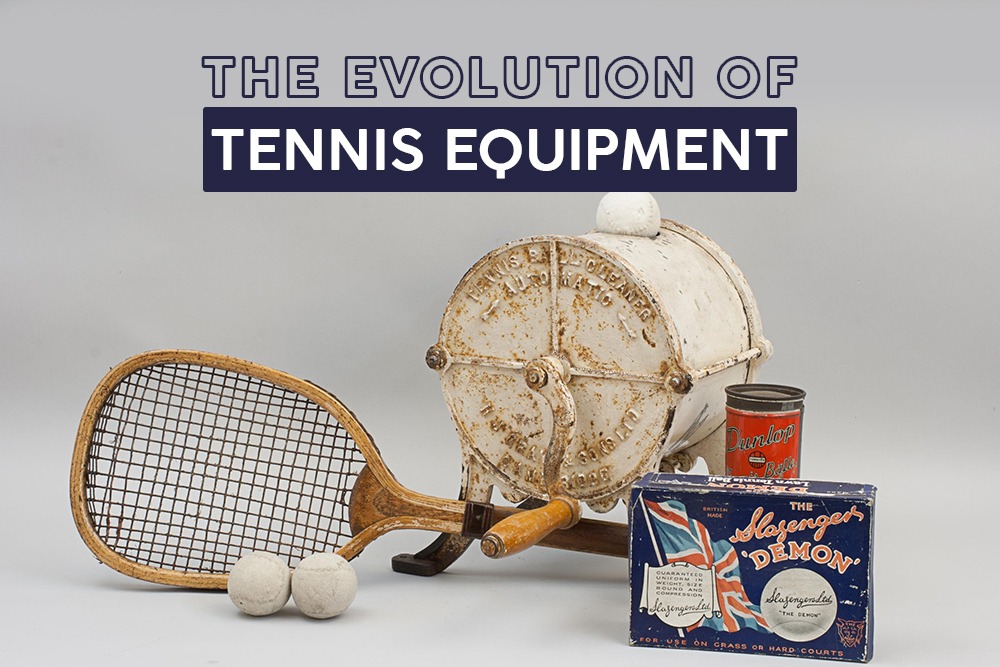The Evolution of Tennis Equipment
Tennis has come a long way since the days of wooden racquets and white tennis balls. In the last century, tennis equipment has undergone significant changes, with new materials and technologies revolutionizing the game. In this blog, we'll take a look at the evolution of tennis equipment and how it has impacted the sport.
RACQUETThe evolution of tennis Racquet began in the late 1960s with the introduction of the first aluminum frame Racquet. These Racquet were more durable and lighter than their wooden counterparts, making them more popular with players. In the 1970s, graphite and fiberglass were introduced as materials for racket frames. These materials made rackets even lighter, stronger, and more powerful.
In the 1980s, the introduction of the first oversized racket heads allowed players to hit the ball with more power and spin. This increased the speed of the game and made it more exciting to watch. The trend towards oversized Racquet continued into the 1990s with the introduction of midsize and mid-plus frames. Today, Racquet are made from a variety of materials, including carbon fiber, titanium, and graphene. These materials are used to create Racquet that are lightweight, powerful, and customizable to each player's individual needs.
BALLSThe first tennis balls were made of leather and stuffed with wool or cork. They were heavy, hard, and not very durable. In the 19th century, the first rubber balls were introduced, which were lighter and more bouncy than their leather counterparts.
In the 20th century, tennis balls underwent further changes. In the 1970s, the International Tennis Federation (ITF) introduced the first yellow tennis ball, which was easier to see on television. In the 1980s, new materials such as nylon and polyester were introduced, making tennis balls more durable and consistent in their bounce.
Today, tennis balls are made from a rubber core and covered in felt. The felt is made from a combination of wool and synthetic fibers and is designed to provide consistent performance and durability.
STRINGSTennis strings have come a long way from the traditional gut strings that were used in the early days of the sport. In the 1970s, synthetic strings were introduced, which were more durable and provided better control than gut strings. In the 1990s, polyester strings were introduced, which allowed players to hit the ball with more spin and power.
Today, there are many different types of tennis strings available, including natural gut, synthetic gut, polyester, and hybrid strings. Each type of string offers different benefits, such as increased power, control, or spin.
SHOESTennis shoes have also evolved significantly over the years. In the early days of the sport, players wore leather shoes with rubber soles. In the 1960s, Adidas introduced the first tennis shoes specifically designed for the sport, with a gum sole that provided better traction on the court.
In the 1970s, Nike introduced the first tennis shoe with an air cushioning system, which provided better shock absorption and comfort for players. Today, tennis shoes are made with a variety of materials, including lightweight mesh and synthetic leather, and feature advanced cushioning and support systems to help players perform at their best.
CLOTHINGEarly tennis players wore long-sleeved shirts, trousers, and ties, which were uncomfortable and restrictive. In the early 20th century, players began to wear shorts and short-sleeved shirts, which allowed for greater freedom of movement. Today, tennis clothing is designed with performance in mind, with lightweight, moisture-wicking materials that allow players to move freely and stay comfortable on the court.
In conclusion, the evolution of tennis equipment has been driven by a desire to improve the performance and comfort of players. From wooden Racquet and leather balls to graphite Racquet and rubber-felt balls, tennis equipment has come a long way over the years. And as technology continues to advance, we can expect to see even more changes in the years to come.












